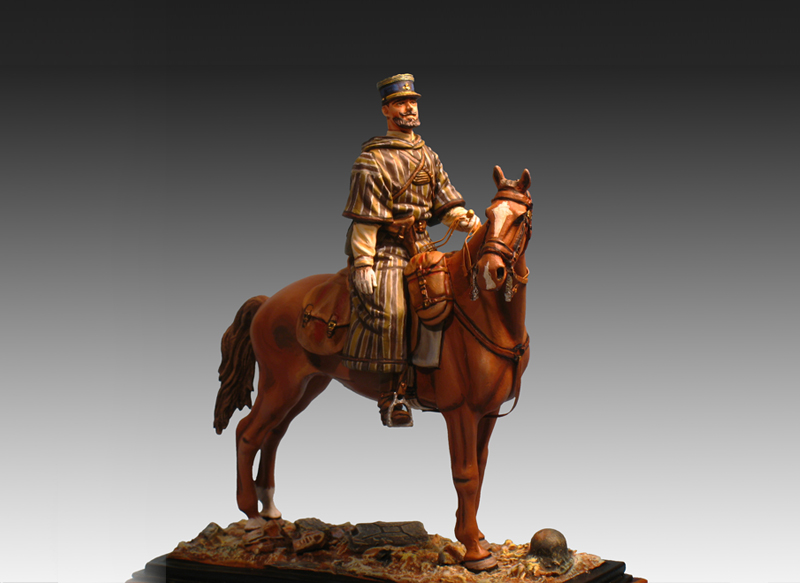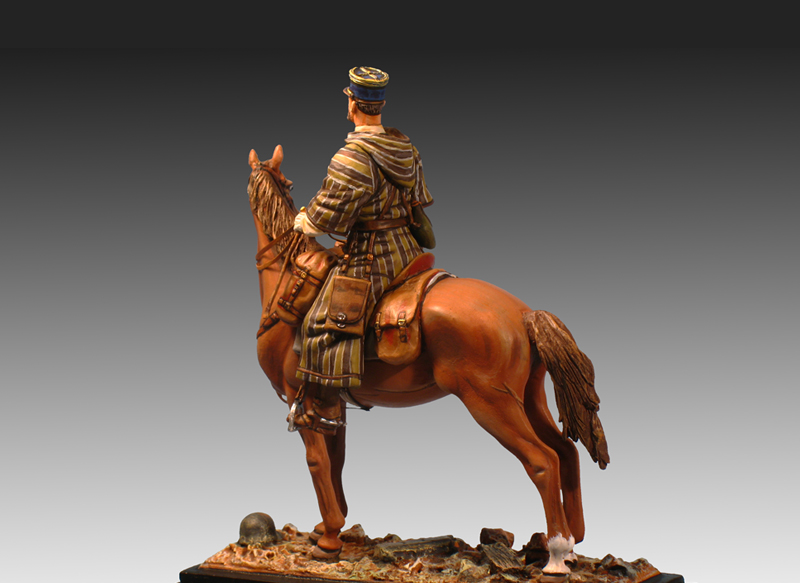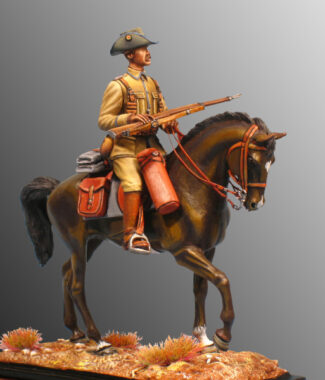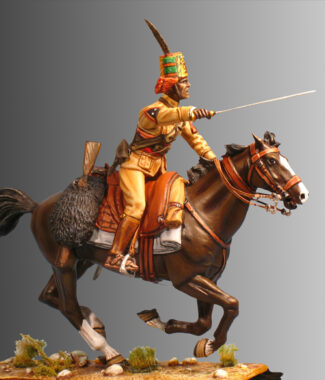1912 – Raised from auxiliary Moroccan troops.
1914 (August) – Creation of two regiments with native chasseurs, which made up one brigade of Native Chasseurs (also known as the Moroccan Brigade). The brigade was available for the 45th Infantry Division.
1914 (September) – Creation of a new regiment of Native Chasseurs after it was disbanded as a result of its decimation at the battle of Marne.
1915 (January) – Renamed as March Regiment of Moroccan Tirailleurs (RMTM – “Régiment de Marche de Tirailleurs Marocains”).
1915 (February) – Appointed to the 96th Brigade, within the just raised 48th Infantry Division.
1916 (December) – Appointed to the 3rd Brigade of Morocco, within the 153th Division of General Pellé.
1918 (March) – Renamed as the 1st March Regiment of Moroccan Tirailleurs (1st RMTM) because a second regiment was raised.
1920 – Reconstituted as the 61st Regiment of Moroccan Tirailleurs.
1929 – Recreated again as the 1st Regiment of Moroccan Tirailleurs.
1965 – Disbanded.
During the first operations of the Second World War, the 1st RTM went into action within the 1st Moroccan Division at the Battle of Gembloux and at the defense of Lille in 1940.
In 1943, after the rearmament of the French army in the North of Africa, it took part in the liberation fo Corsica. In 1944, during the Italian campaign it was reassigned to the French Expeditionary Corps commanded by General Juin, more precisely within the 4th Moroccan Mountain Division. In August 1944, it was dispatched to the Provence and contributed to liberate south-eastern France and later the south of Germany.
Its coat of arms shows the Solomon’s Seal with five points on top of a crescent with a swallow carrying two shinbones on its beak. The text engraved on the crescent can be transcribed as “Min Moulay Idriss jinna wa rabbi arfoualina”, which means “From Moulay Idriss we come and the Lord knows/has seen us”.
The combination of French kepi and native djellabah was typical of French colonial officers. On this type of garment, as well as on the greatcoat and leather or jeep coat, rank badges were worn in the form a tab which was buttoned on the chest. A half-moon emblem appeared on the front of the steel helmet.
The equipment: officer’s waistbelt, German pistol holster (Luger 08), water bottle and map case suspended from straps over the shoulders.
Horse furniture: Typical French officer’s saddle (1874 model), bridle and saddlebags.








Reviews
There are no reviews yet.